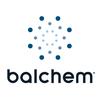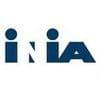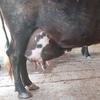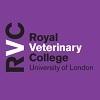Explore all the information on
Dairy cattle - Management practices
Welcome to the page about Dairy cattle - Management practices of Engormix; a source of knowledge on Dairy cattle - Management practices.
Introduction The major use of rangelands is grazing or browsing by livestock and wild herbivores. Semiarid and arid rangelands are often fragile and subjected to accelerated soil erosion if not managed appropriately. If rangelands are mismanaged, so that plants fail to provide sufficient soil cover, the composition of plant community changes, resulting in reduced productivity and increased erosion. Continued abuse of the rangeland system can also result in severe land...
Comments : 0
Recommendations: 1
Benefits of early detachment Faster milking. Early detachment reduces machine-on time. This may or may not result in milking more cows per hour depending on parlour size and milking routine. AMS benefit the most from a short machine-on time. Calm cows. Several studies have observed calmer cows when detaching at a higher flow rate. First lactation cows seem to be more sensible to overmilking than older cows. Improved teat...
Comments : 5
Recommendations: 1
...
Comments : 2
Recommendations: 5
...
Comments : 0
Recommendations: 2
Why Dairy Farm Fails? Steps to overcome the challenges. Why dairy farm fails? Poor selection of cattle (breed, age, health etc.) Absence of standard operating procedures Absence or poor execution of breeding Methods. Getting Dairy loans at high interest rates. Bio-security to animals Non-adherence to proven and prescribed procedures Dependence on either illiterates (laborers etc) or incorrect source of knowledge. Absence of passion and integrity on the part of farm promoters / management....
Comments : 0
Recommendations: 0
INTRODUCTION Digital dermatitis (DD) is a widespread bacterial foot lesion in cattle that typically develops on the bulb of the heel, causing ulcerative lesions that may be uncomfortable or very painful (Cheli and Mortellaro, 1974; Döpfer et al., 1997). It is the most common foot lesion in confined dairy systems, with a prevalence ranging from 15 to 49% (Holzhauer et al., 2006; USDA, 2009; Solano et al., 2016) and...
Comments : 0
Recommendations: 1
.jpg&w=3840&q=75)

AMINODat® 6.0 The most extensive web-based database for animal nutritionists
Suggested link
Introduction Heat stress causes major losses ($ 2.4 billion) in animal production, including dairy cattle, beef cattle, swine and poultry in the USA (St-Pierre et al., 2003). Heat stress affects feed intake, body temperature, maintenance requirements and metabolic processes, feed efficiency, milk yield, reproductive efficiency, behavior and disease incidence (Cook et al., 2007; Tucker et al., 2007; Rhoads et al., 2009). Water is necessary for a proper rumination and digestion...
Comments : 0
Recommendations: 2
1. Introduction Social licking is defined as the act of one individual licking the body of another [1]. This behavior is routinely observed at birth when the dam licks her offspring [2], at courtship when the male licks a female in estrus [3], but it also occurs in other contexts between animals of the same sex and age [4] A variety of functions for this behavior have been proposed. For example, recipients of social licking may benefit from improved...
Comments : 2
Recommendations: 2
Introduction Increasing atmospheric concentrations of greenhouse gases (GHG) is a major worldwide concern. It is estimated that, globally, direct emissions from animal agriculture account for 7-10% of human derived GHG emissions (O’Mara, 2011), with this estimate increasing to 14.5% if indirect sources, such as feed production and deforestation for pasture or crop expansion are accounted for (Gerber et al., 2013)....
Comments : 4
Recommendations: 1
Dr. Karl Nuss (University of Zurich) talked about the impact of different types of flooring on claw health, during the International Conference Lameness in Ruminants 2015 in Valdivia, Chile....
Comments : 4
Recommendations: 5
The University of Kentucky is teaming up with the University of Minnesota to offer the 2017 Conference on Precision Dairy Farming in Lexington.
The conference is May 30 through June 1 at UK’s Coldstream Dairy Farm and the Hyatt Regency in downtown Lexington. Although the early deadline has passed, registration is still available.
“We have designed this conference for dairy producers and practical applications rather than just focusing on presenting research...
Comments : 0
Recommendations: 0
Marina Von Keyserlingk (University of British Columbia) discussed stalls design, identification of injuries and other factors to provide guidance for the prevention of lameness, during the International Conference Lameness in Ruminants 2015 in Valdivia, Chile....
Comments : 1
Recommendations: 1
.jpg&w=3840&q=75)

AMINODat® 6.0 The most extensive web-based database for animal nutritionists
Suggested link
Background Over the past decade, there has been a huge increase in the use of remote monitoring devices such as global positioning (GPS) trackers, location sensors, proximity loggers and accelerometers for automated recording of both human and animal behaviour [1–16]. By necessity, this has led to the need for more efficient and accurate methods of analysing the vast amounts...
Comments : 0
Recommendations: 1
The Precision Dairy Farming conference will be held in Lexington, Kentucky May 30 to June 1, 2017. There will be an opportunity to explore some of the technologies discussed and new innovative technologies the University of Kentucky is researching.
The program will include dairy producer showcase sessions, many industry updates, and talks about how research impacts dairy management. The trade show will be an opportunity to see...
Comments : 1
Recommendations: 3
The Southern Dairy Conference is planned through the joint efforts of land grant universities throughout the Southeast, under the sponsorship of the SERA 15 regional committee “Competitiveness and Sustainability of the Southern Dairy Industry”. Our objective is to offer informative and thought provoking presentations on current issues of importance to all facets of the dairy industry: production, processing, and manufacturing interests in industry and...
Comments : 0
Recommendations: 0
Introduction Sustainability of dairy farm production systems can be measured by the intersection between profitability and environmental stewardship. It is clear that unprofitable farms are destined to go out of business. Similarly, although not as evident, farms that are not efficient in the use of input resources, having higher wastages, and consequently producing more emissions, are likely to be un-sustained in the...
Comments : 0
Recommendations: 3
Introduction In spite of considerable progress in improvement of milk quality, mastitis continues to be the most frequent and costly disease of dairy cows, however few veterinarians are actively involved in mastitis control programs. On most farms, detection, diagnosis and administration of treatments for clinical mastitis are the responsibility of farm personnel and veterinarians are often consulted only when a case...
Comments : 0
Recommendations: 0
Introduction Dairy farming is a highly dynamic and integrated production system that requires continuous and intense decision-making for improved profitability. Several dairy farm components that include 1) cattle, 2) crops, 3) soils, 4) weather, 5) management, 6) economics, and 7) environment are extremely interrelated [1]. These components and their sub-components dynamically affect and are affected among them. Their...
Comments : 0
Recommendations: 1
.jpg&w=3840&q=75)

AMINODat® 6.0 The most extensive web-based database for animal nutritionists
Suggested link
The most important factors that determine the selection of the type of housing for dairy cattle are cost, animal comfort, worker’s efficiency, durability, and a favorable return on investment. Since the first low-profile cross-ventilated barn (LPCV) started to operate in South Dakota in the fall of 2005, at least 6 more facilities have been built in this state using this technology, and dozens of them in the rest of the country. Although LPCV (enclosed,...
Comments : 4
Recommendations: 1
Introduction Grouping cows is a common practice farmers use to manage their herd more efficiently. Farmers use this strategy to separate far-off, close-up, sick, fresh, and pregnant cows. Grouping addresses cows’ specific needs. However, grouping lactating cows for nutritional purposes and providing groups with more precise diets has not been adopted as widely as it could be, despite the fact that many studies...
Comments : 1
Recommendations: 3



.jpg&w=3840&q=75)


















